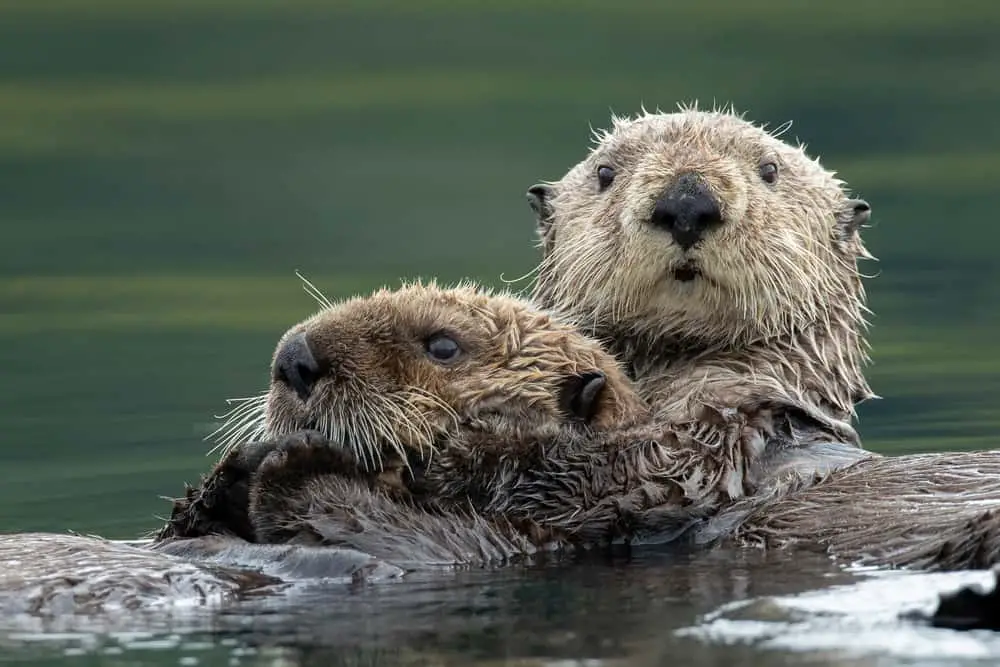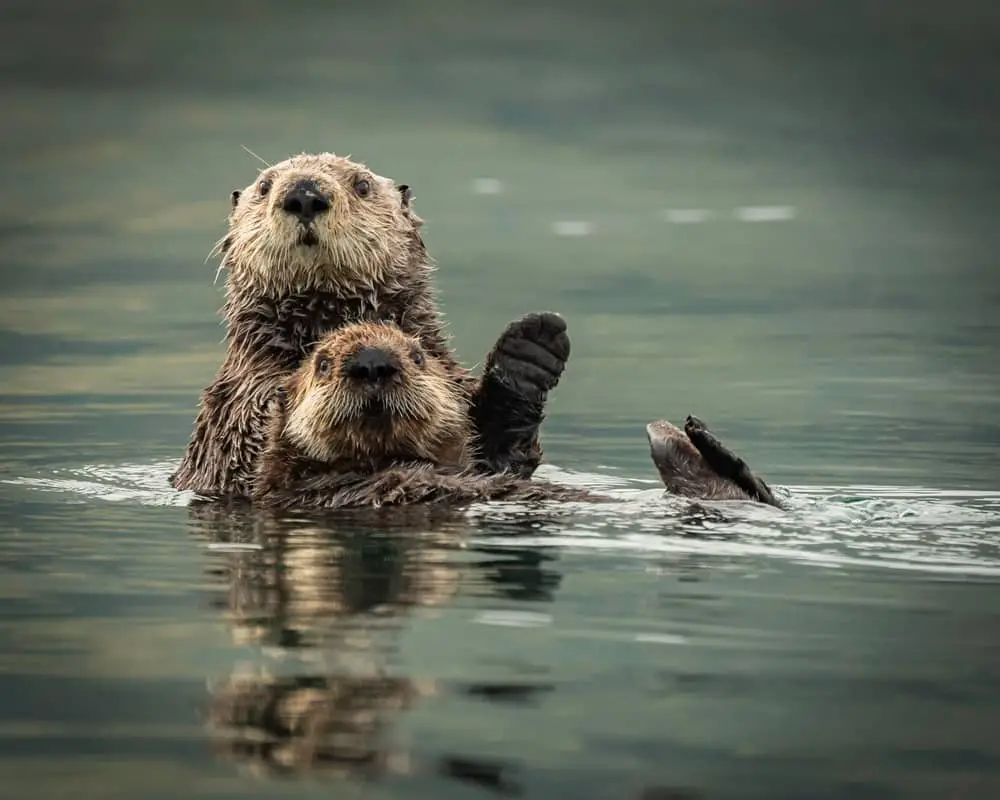Sea otters (Enhydra lutris) are members of the weasel family and a keystone species in the marine ecosystems of the Pacific Northwest. They play an essential role in maintaining healthy ocean kelp forests, which provide shelter for other animals and support fisheries. Sea otter populations have declined dramatically due to human activities such as hunting and oil spills. In order to conserve these iconic mammals, it is critical to understand their behavior, ecology and habitat requirements.
This article provides an overview of sea otter biology, including information on diet, reproduction, social structure and threats facing this species. It also describes current efforts being made by researchers and conservationists to protect sea otters from further declines. Finally, recommendations are provided for how individuals can help contribute towards research projects or take part in local conservation initiatives that focus on protecting sea otters.
The goal of this article is to create greater understanding about why sea otters must be conserved and empower readers with tangible ways they can get involved with helping them survive in our oceans today. With continued education and actionable steps towards protection, hopefully we can see recovery of this unique species into future generations.

Overview
The sea otter is a marine mammal belonging to the pinniped family. It is found in near-shore coastal areas of the North Pacific Ocean and has been listed as an endangered species since 1977. Sea otters inhabit shallow waters along rocky coasts and inshore kelp forests. They are considered keystone species whose presence contributes to providing balance within their environment by controlling populations of other organisms such as prey fish, crabs, abalones and clams.
Sea otters have thick fur coats that keep them insulated from cold water temperatures while they eat or rest on top of the surface. Otters mainly feed on invertebrates but occasionally consume small vertebrates such as fishes and seabirds’ eggs. Due to environmental degradation, poaching and hunting for their pelts caused dramatic declines in sea otter population resulting in extinction threats throughout its range.
Conservation efforts focus on protecting remaining habitats and educating public about importance of maintaining healthy ecosystems with thriving sea otter populations. Such conservation programs involve research projects which help guide management decisions based upon scientific data collected from these aquatic mammals living in different parts of their range.
Ultimately, understanding how human activities affect local environments will be essential for helping protect these unique animals and restore depleted populations back into healthy levels for future generations to enjoy.
Habitat And Distribution
Sea otters occupy a wide range of habitats, varying from shallow coastal bays to the outer continental shelf. They inhabit areas of relatively high productivity and tend to be found in close proximity to shorelines. Their habitat range is limited by temperature, food availability, and human disturbance.
The most common sea otter habitat types are estuaries and bays with sandy or rocky seafloors that provide shelter for resting during daylight hours as well as numerous prey species such as clams, crabs, and fish. Sea otters also prefer kelp beds because they offer protection from predators while allowing them access to their prey items. In terms of depth preferences, sea otters typically avoid waters deeper than 300 m (984 ft).
Overall, sea otter distribution patterns are closely related to oceanographic features like upwelling and water temperature gradients which influence the abundance of their preferred prey items. The extent of their habitat use varies seasonally due to changing environmental conditions such as food availability, predation pressure, thermal stress levels, and reproductive activity.
For example, females often give birth in sheltered bays where currents are slowest and temperatures warmest; whereas males may move further offshore into cooler waters during summer months when reproduction is not occurring. As such, it can be said that an understanding of sea otter habitat distribution requires consideration of both seasonal fluctuations in environmental conditions as well as local oceanography characteristics.
Giant River Otters’ Predators Unmasked: A Fight for Survival
Physical Characteristics
Sea otters are medium-sized marine mammals, with a body shape that is cylindrical and streamlined. They have thick fur which ranges in color from dark brown to silver gray. A unique feature of sea otters is their long claws, which they use for grabbing prey and grooming themselves. The tail length of these animals is usually around one-third the total body length, while the muzzle size varies between individual species.
Sea otter anatomy also includes a number of adaptations for an aquatic lifestyle. Their front paws are webbed, allowing them to swim quickly and efficiently through water. Additionally, their hind feet can be rotated backward, helping them move faster when paddling underwater or on the surface.
Sea otters possess several layers of insulating fur to keep warm even in cold temperatures. Furthermore, they typically inhabit areas close to shorelines where food sources such as clams and mussels are plentiful.
Overall, physical characteristics play an important role in the life of a sea otter: they give it mobility in water; provide insulation against cold temperatures; help it locate food resources; and enable it to groom itself properly to maintain its health. As such, understanding these features helps us better appreciate the ecology and behavior of this remarkable animal species.
Diet And Feeding Habits
The diet and feeding habits of sea otters are an integral part of their identity as marine mammals. Sea otters primarily feed on invertebrates, such as crabs, clams, mussels, urchins, snails and abalones; however they also consume fish and some species of algae. In general, sea otter diets consist of:
Mollusks:
Crabs
Clams
Mussels
Urchins
Snails
Abalones
Fish:
Salmonids (Salmon family)
Rockfishes (Sebastidae Family)
Pacific Herring (Clupea pallasii)
Pacific Cod (Gadus macrocephalus)
Flatfish (Pleuronectiformes order)
Halibut (Hippoglossus stenolepis )
Sole (Soleae)
English sole (Parophrys vetulus )
Algae :
Sea lettuce (Ulva lactuca)
Kelps/Brown seaweeds ((Order Laminariales)
In terms of feeding behavior, sea otters use tools like rocks or other objects to open shells or crush prey before consuming them. For example, when eating hard-shelled mollusks like oysters they will hit it against rock surfaces until it opens up enough for them to remove its meat with their paws or teeth.
Additionally, when opening bivalves such as mussels or clams they tend to hold one valve with a paw while using another object held between the forepaws to pry open the shell. This type of tool usage is unique among marine mammals and has been observed in early human societies as well.
The ability to use tools allows sea otters access to otherwise inaccessible food sources. Therefore this behavior plays an important role in maintaining healthy populations by increasing availability of resources during times of scarcity.

Social Behavior And Interactions
Sea otters demonstrate a range of social behavior and interactions. Group dynamics are important in their social lives; they often form family structures with younger individuals being raised by adults within the group. Interaction between adults is also common, including playtime activities such as chasing or swimming around each other. Mating rituals involve courtship displays that include vocalizations, aggressive behaviors, body contact, attention-seeking behaviors and playful postures.
The presence of pups further increases interaction among sea otters. Adults appear to be protective of young pups, displaying a variety of caretaking behaviors such as grooming and providing food for them. Young individuals have been observed engaging in various forms of play which may help develop skills needed for survival as an adult.
Overall, these observations suggest that sea otters possess complex social systems involving a wide array of behaviors and interactions with one another. This complexity helps explain why successful conservation efforts require not only protection from threats but also maintaining healthy populations through effective management strategies focused on preserving the natural family structures found in wild sea otter communities.
Reproduction And Life Cycle
Sea otters have a distinct breeding cycle that begins in the late winter or early spring. Mating typically takes place during this period, with males engaging in aggressive behavior to mate with females. It is important to note that sea otter mating tends to be polygynous, as one male will mate with multiple females over the course of a single season.
Following successful mating, gestation lasts approximately seven months and ends with the birth of one pup. The pup undergoes rapid development following its birth; within just two weeks it can already swim and feed itself independently.
Parental care plays an integral role in sea otter survival and the species’ ability to thrive. Mothers invest considerable time caring for their pups, providing warmth by wrapping them in kelp beds until they are old enough to maintain body temperature on their own. During this time, mothers also teach their young vital skills such as grooming techniques and dive patterns necessary for future success as adults.
The average life span of a sea otter varies depending upon factors like predation risk, environmental conditions, and nutrition levels but generally ranges from 15-20 years. This information has significant implications for conservation efforts since longer lifespans indicate higher reproductive potentials which translates into larger population sizes overall. Thus understanding sea otter reproduction cycles provides great insight into how best to protect these remarkable creatures for generations to come.
Conservation Status
The conservation status of the sea otter is a cause for concern. Worldwide, this species has suffered from population declines and continues to be threatened due to environmental pollution. As an endangered species, the survival of the sea otter relies heavily on conservation efforts.
These efforts are necessary to protect the dwindling numbers of wild sea otters and ensure that their populations can recover. In order to combat ocean pollution, it is important to increase public awareness about its effects on wildlife and create marine protected areas where appropriate. Regulations must also be established which limit or prohibit certain pollutants from entering aquatic ecosystems.
Additionally, designated habitats should receive protection as part of nature reserves or national parks in order to limit human interference within these areas. To inform conservation decisions, monitoring animal populations and assessing potential causes of mortality are essential steps towards understanding ongoing threats faced by these animals. Finally, effective strategies need to be implemented in order to reduce risks posed by current challenges such as hunting and habitat destruction.
In light of all this information regarding the endangerment of sea otters around the world, concerted action needs to be taken if we hope for their continuing survival in our oceans. Conservation efforts can provide much needed protections but only through collective effort will meaningful progress be made in restoring depleted populations and safeguarding them against extinction.
Conclusion
Sea otters are a unique species that are vital to the health of coastal ecosystems. They play an important role in maintaining balance within their habitat by consuming prey such as sea urchins, crabs, mussels and clams. Sea otters help keep these populations in check so they don’t become overabundant and negatively affect other organisms.
With good physical characteristics like dense fur insulation, webbed feet for swimming and strong claws for gripping prey, sea otters have adapted well to life near shorelines. They also have complex social behaviors which include grooming each other, communal sleeping and group feeding.
Females give birth to one pup after a gestation period of about six months and provide strong maternal care with nursing periods lasting around 8-12 months before independence. Unfortunately, this species is currently listed as threatened due to various human impacts including hunting, oil spills and environmental changes.
To ensure the future survival of this remarkable creature it is essential that conservation efforts continue worldwide. These should focus on reducing threats from human activities while also making sure there is enough suitable habitat available for them do thrive. By protecting sea otter populations we can contribute towards preserving our fragile marine environments now and into the future.
